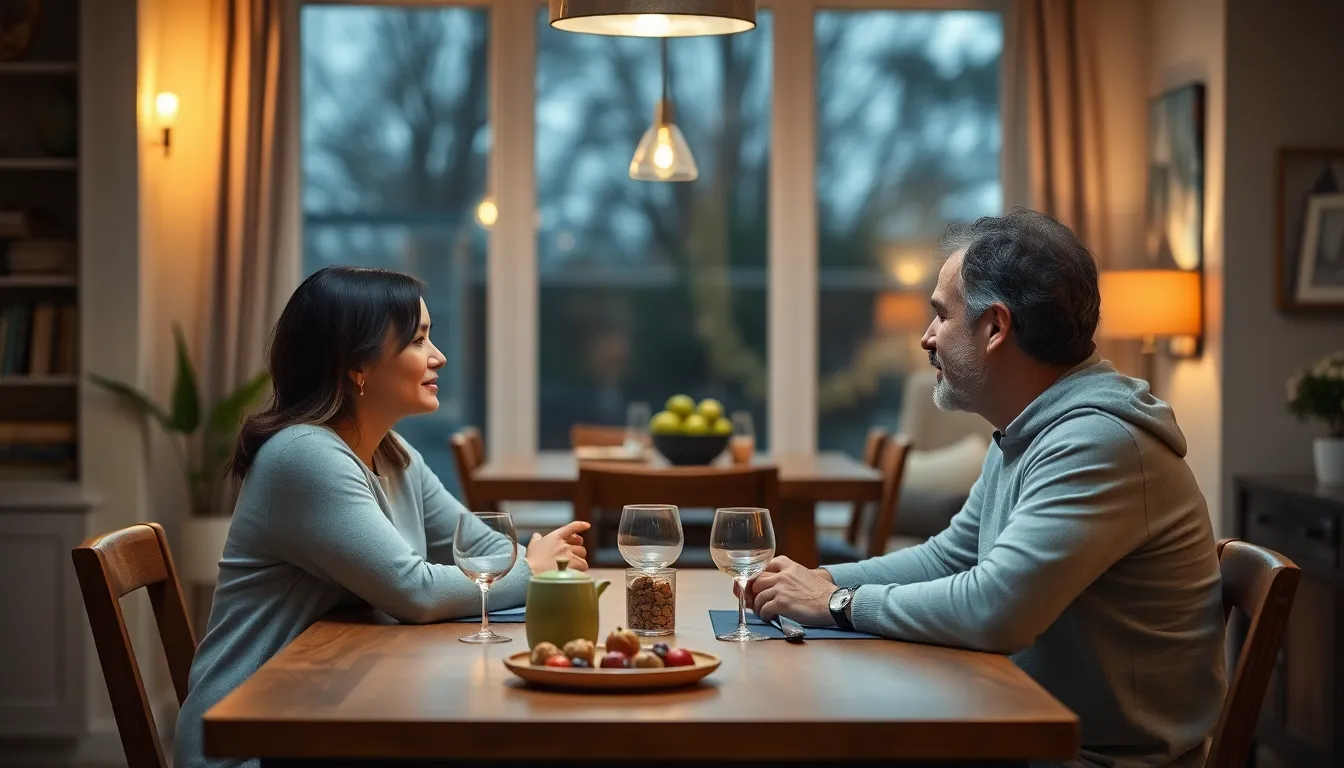Relationships can feel like a rollercoaster ride—thrilling highs and stomach-churning lows. When conflict rears its ugly head, it can seem like the end of the world, or at least the end of dinner plans. But don’t hit the panic button just yet! Conflict resolution isn’t just a fancy term for awkward conversations; it’s the secret sauce that turns potential disasters into opportunities for growth.
Navigating disagreements might feel like trying to solve a Rubik’s cube blindfolded, but it doesn’t have to be that complicated. With the right tools and a sprinkle of humor, couples can transform tension into understanding. So buckle up as we dive into the art of conflict resolution and discover how to keep love alive—even when the going gets tough.
Table of Contents
ToggleUnderstanding Conflict Resolution In Relationships
Conflict resolution in relationships involves addressing disagreements constructively. Healthy communication creates a foundation for resolving issues effectively. Active listening plays a key role, allowing both partners to express feelings without interruption. Acknowledging emotions helps individuals understand each other’s perspectives better.
Implementing techniques like “I” statements can reduce defensiveness. For example, instead of saying, “You make me feel,” one partner might say, “I feel upset when.” This approach fosters a more open dialogue. Remaining calm during discussions prevents escalation. When voices remain low, it’s easier to find common ground.
Compromise is essential in conflict resolution. Each partner must be willing to adjust their expectations or behaviors. Identifying shared goals motivates collaboration and encourages joint problem-solving. By focusing on the relationship’s health, couples can prioritize resolution over winning arguments.
Timing also influences conflict resolution effectiveness. Discussing issues when both partners feel relaxed produces better outcomes. Choosing the right moment can facilitate a more productive conversation.
Finally, seeking external support, like couples therapy, can guide partners through complex conflicts. Professional guidance helps couples develop healthier communication patterns and conflict resolution strategies.
Conflict resolution requires effort, patience, and a willingness to understand one another. Relationships thrive when partners address issues directly, fostering deeper connections and mutual respect.
Common Types Of Conflicts

Conflicts in relationships can arise in various forms. Understanding these common types helps partners navigate their disagreements effectively.
Emotional Conflicts
Emotional conflicts often stem from unmet needs or unresolved feelings. They typically involve strong emotions like anger, frustration, or hurt. Partners might express these feelings differently, leading to misunderstandings. Recognizing triggers is vital for addressing such conflicts. Emphasizing empathy allows individuals to validate each other’s emotions. Building a safe space for sharing feelings fosters deeper connections. Utilizing techniques such as active listening can facilitate emotional expression and resolution.
Communication Conflicts
Communication conflicts arise from misinterpretations or unclear expressions. Partners may misread tones or intentions, leading to escalating tensions. Clarity and honesty play essential roles in minimizing these types of conflicts. Regular check-ins can help ensure both partners understand each other’s thought processes. Using straightforward language and avoiding assumptions strengthens communication. Encouraging open dialogue fosters an environment where both individuals feel heard. Establishing ground rules for conversations can also enhance understanding and reduce potential misunderstandings.
Effective Conflict Resolution Strategies
Conflict resolution enhances relationship dynamics. Implementing effective strategies fosters understanding and collaboration.
Active Listening Techniques
Active listening plays a crucial role in resolving conflicts. Paraphrasing ensures clarity by restating what the partner has expressed. Showing empathy demonstrates that feelings are acknowledged. Maintaining eye contact and nodding encourages openness. Asking clarifying questions reveals deeper understanding and avoids assumptions. These techniques create a safe space for open dialogue, promoting connection and minimizing reinterpretations of each other’s words.
Expressing Feelings Constructively
Constructive expression of feelings is vital in navigating conflicts. Using “I” statements encourages personal ownership of emotions. Phrasing such as “I feel hurt when…” avoids placing blame and opens a constructive conversation. Remaining calm during discussions reduces tension and sets a positive tone. Prioritizing clarity allows for specific grievances to be addressed effectively, preventing escalation. Timing matters; choosing the right moment fosters receptiveness and understanding.
The Role Of Empathy In Conflict Resolution
Empathy plays a crucial role in resolving conflicts within relationships. Understanding another person’s feelings and perspectives fosters a more compassionate atmosphere. When partners actively listen and validate each other’s emotions, they create a safe space for open dialogue. This practice often leads to deeper connections.
Acknowledging the emotions involved in a conflict helps to diffuse tension. Emphasizing empathy encourages individuals to consider how their words and actions impact their partner. By doing so, both parties shift the focus from winning an argument to understanding each other. Practicing empathy allows individuals to identify triggers, helping to address underlying issues.
Using phrases like “I understand how you feel” demonstrates empathy effectively. This statement not only validates the partner’s emotions but also shows a willingness to engage. Relationships benefit from clear communication, but empathy enhances that communication further. Listening without interruption signals respect and fosters a collaborative resolution process.
Moreover, empathy can help mitigate the intensity of emotional conflicts. Recognizing unmet needs or unexpressed feelings often shifts the dynamic toward a more productive conversation. Demonstrating empathy can soften defensiveness and encourage openness, leading to more effective resolution strategies.
Additionally, partners should approach conflicts with a shared goal of resolution. Focusing on a mutual understanding rather than personal victories creates an environment conducive to collaboration. Regularly practicing empathy builds emotional resilience, making future conflicts easier to navigate. Overall, the integration of empathy into conflict resolution strategies enriches relationships, allowing partners to face challenges together.
Navigating conflict in relationships can be challenging but it’s a vital part of building a strong partnership. By embracing open communication and practicing empathy, couples can transform disagreements into moments of growth. Utilizing effective strategies like active listening and expressing feelings constructively fosters a deeper understanding between partners.
It’s essential to remember that conflict resolution isn’t just about solving problems; it’s about strengthening the bond between individuals. With patience and a willingness to understand each other, couples can create a more harmonious relationship. Ultimately, the journey through conflict can lead to greater respect and connection, making the partnership even more rewarding.





